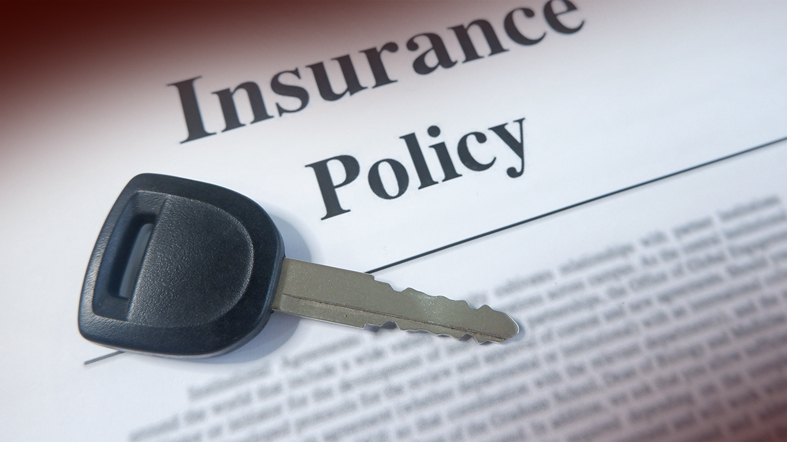And How Can Someone Injured in a Motor Vehicle Accident “Pierce” the Verbal Threshold to Obtain Non-Economic Damages for Pain and Suffering?
Depending on the automobile-insurance policy that you select, if you look at your policy’s Declaration’s Page, you may see a notation that states “Verbal Threshold” (or “Lawsuit Threshold” or “Limitation to Sue”) selected. These terms of art have a specific meaning that all people should be familiar with, as their selection affects the rights of those injured in automobile accidents to bring an action for personal injuries. Let’s dive in and examine what the Verbal Threshold means, where it came from, and why it exists.
In 1972, the New Jersey Legislature enacted the “New Jersey Automobile Reparation Reform Act,” commonly referred to as the “No-Fault Act,” with the purpose of reducing the high costs of automobile insurance. N.J.S.A. 39:6A-1, et seq. The Act eliminated the existing fault-based system of automobile insurance, meaning that the person at fault in the accident had to pay for the claimant’s medical costs, and instead instituted a no-fault concept called Personal Injury Protection (“PIP”). Pursuant to the No-Fault Act, regardless of who is at fault in an accident, the injured party’s insurance pays for their own medical costs. This ensures that those injured in automobile accidents can promptly pay for, and thereby promptly receive, medical treatment for their injuries.
In exchange for this benefit, the 1972 No-Fault Act precluded those injured in an automobile accident from suing a negligent driver for non-economic damages (i.e. pain and suffering) unless one of two factors were met: (a) the injured party sustained a qualifying injury; or (b) the injured party elected to pay an increased premium in exchange for an exemption from the requirement in (a). As initially enacted, a qualifying injury was one that required medical expenses above a certain “Monetary Threshold.” However, this often caused claimants to inflate claims to hit a dollar “target,” which led to abuse of the insurance system and unintentionally increased healthcare costs.
To fix this, in 1988, the 1972 No-Fault Act was amended to replace the Monetary Threshold with a “Verbal Threshold.” N.J.S.A. 39:6A-8. Under this Verbal Threshold, a qualifying injury was one that was “significant” or “permanent” rather than one that required medical expenses above a certain cost-threshold. Notwithstanding, no other guidelines were provided as to whether an injury was significant or permanent including, but not limited to, soft-tissue injuries that regularly occur as a result of motor vehicle accidents. This created its own set of issues since the medical and legal fields could not readily define what injuries were statutorily significant or permanent.

Accordingly, in the seminal case of Oswin v. Shaw, 129 N.J. 290 (1992), the New Jersey Supreme Court set two standards, an objective standard, and a subjective standard, for determining whether an injury was significant and/or permanent and, therefore, whether the injury pierced the 1988 Verbal Threshold. Under the objective standard, a plaintiff had to produce “credible, objective evidence” that the injury was permanent or significant. Id. at 322. Under the subjective standard, a plaintiff had to produce evidence that the injury had a serious impact on his or her life. Id. at 318-19.
Meanwhile, in 1998, the Legislature amended the No-Fault Act through passage of the New Jersey Automobile Cost Reduction Act (AICRA), which enacted the modern-day Verbal Threshold” or “Limitation on Lawsuit” option, which still stands today.
AICRA established that there are six (6) categories within which an injury can fall in order to pierce the Verbal Threshold:
(1) Death
(2) Dismemberment
(3) Significant disfigurement or significant scarring
(4) Displaced fractures
(5) Loss of a fetus
(6)
A permanent injury within a reasonable degree of medical probability,
other than scarring or disfigurement. N.J.S.A. 39:6A-8.
Categories (1) through (5) are self-explanatory, and a vast majority of the time, injuries clearly do – or do not – fall within the categories. Due to this reason, as well as the soft-tissue nature of injuries most often sustained in automobile accidents, the majority of litigants claim that their injuries fall within Category (6).
Category (6) incorporated Oswin’s objective prong and created an objective, statutory standard for determining whether an injury is permanent. “An injury shall be considered permanent when the body part or organ, or both, has not healed to function normally and will not heal to function normally with further medical treatment.” N.J.S.A. 39:6A-8(a). Further, injured plaintiffs must prove this claim through objective, credible medical evidence that cannot solely be based on the plaintiff’s subjective complaints. A board-certified, treating physician must certify as to the permanency of a plaintiff’s injuries through the use of objective testing and ongoing evaluations. Id.
While AICRA explicitly incorporated Oswin’s objective standard, it was initially unclear whether AICRA also incorporated Oswin’s subjective standard regarding whether a claimant’s injury had a serious impact on his or her life. When this subjective standard was not expressly included in the statute, litigation ensued to determine whether the New Jersey Legislature also intended to include it as a prerequisite to recovering non-economic damages.
The New Jersey Supreme Court resolved this ambiguity in DiProspero v. Penn, 183 N.J. 477 (2005). In DiProspero, the New Jersey Supreme Court recognized that AICRA explicitly incorporated the objective medical evidence standard of Oswin and thereby “consciously chose not to incorporate…the serious life impact standard,” Oswin’s subjective standard. DiProspero at 1050. Thus, the New Jersey Supreme Court held that “the plain language of N.J.S.A. 39:6A-8(a) does not contain a serious life impact standard.” DiProspero at 1057; accord Serrano v. Serrano, 183 N.J. 508 (2005).
As such, if someone is injured in a motor vehicle accident and sues for non-economic damages, then he or she must only prove that his or her injury falls within one of the six categories listed within N.J.S.A. 39:6A-8 in order to collect such damages. He or she does not need to prove that his or her injury had a serious life impact as a prerequisite for such an award.
That being said, a claimant subject to the modern-day Verbal Threshold (or Lawsuit Threshold or Limitation to Sue) must still provide a board-certified physician’s certification as to the permanency of his or her injuries to “pierce” the threshold and be able to recover for non-economic damages such as pain and suffering.
If you do find yourself in the disadvantageous position of being injured in a car accident while being subject to the Verbal Threshold, Abdou Law Offices, LLC will assist you with your insurance claim and medical treatment.
For more information on our services related to Personal Injury, please click here.
Please call (732) 540-8840 if you are injured in a motor vehicle accident or if you have any questions about the New Jersey Verbal Threshold.
[*All materials have been prepared for general information purposes only to permit you to learn more about our firm, our services, and the experience of our attorneys. The information presented is not legal advice, is not to be acted on as such, may not be current, and is subject to change without notice.*]




